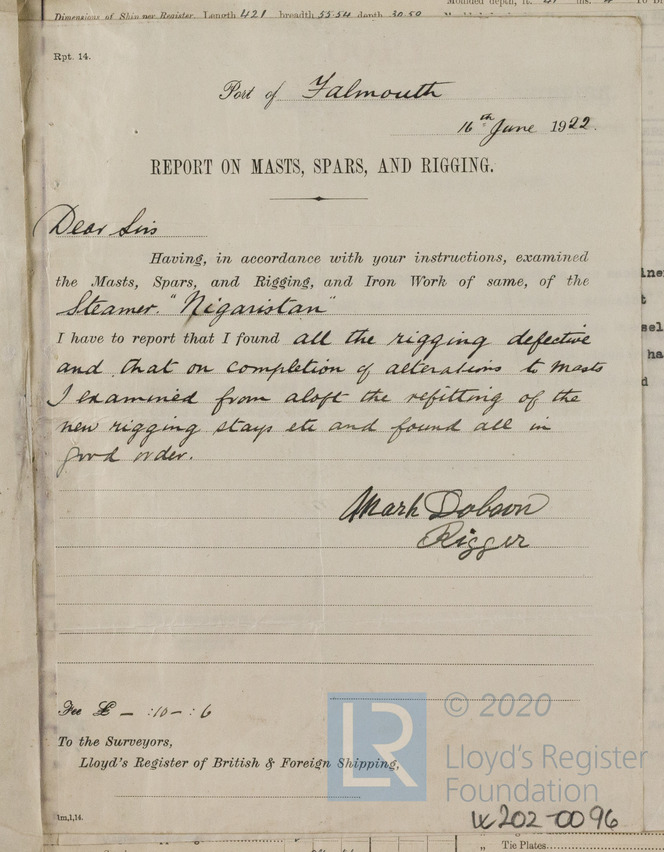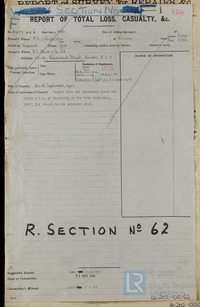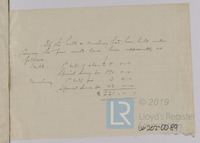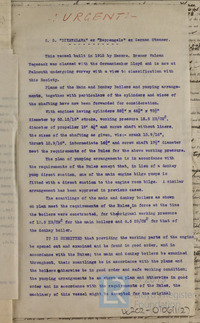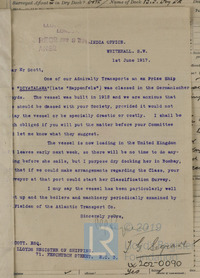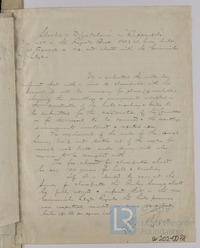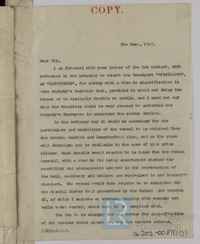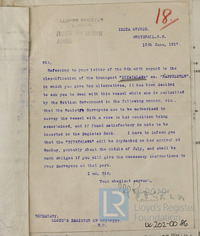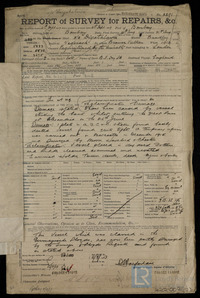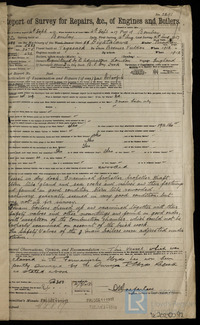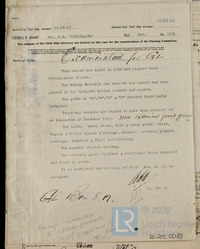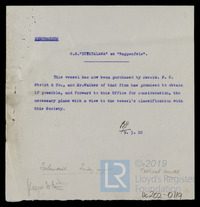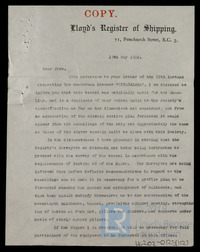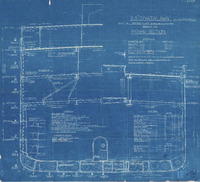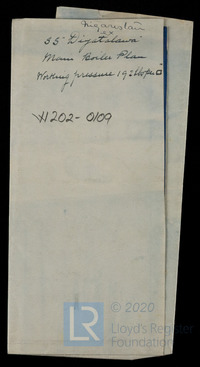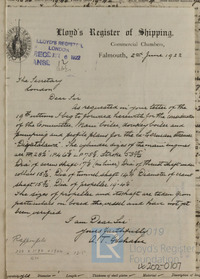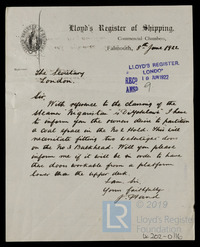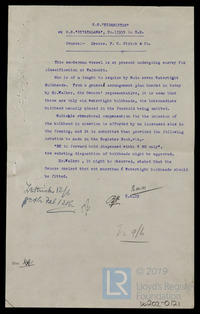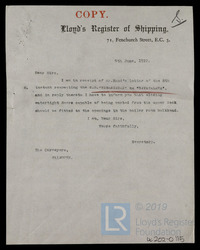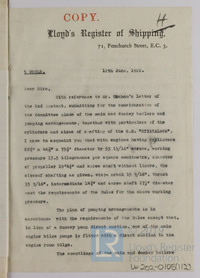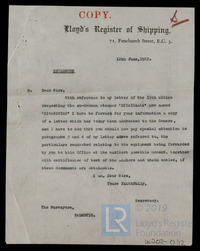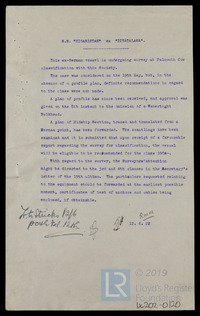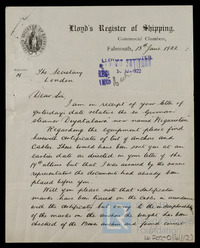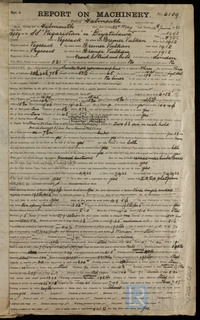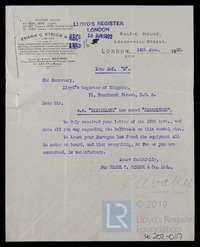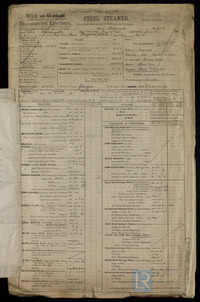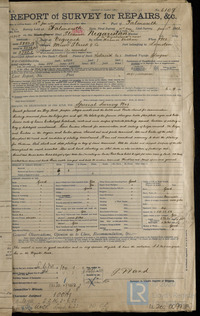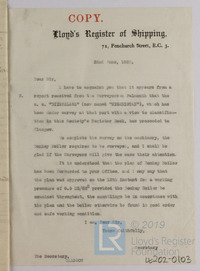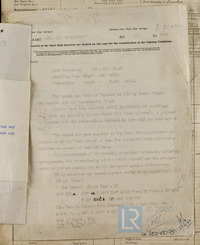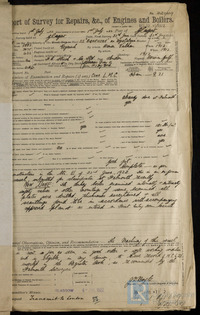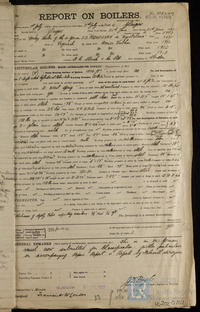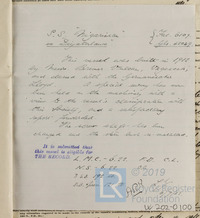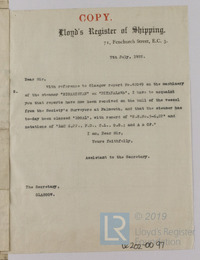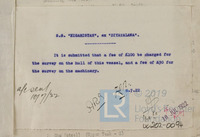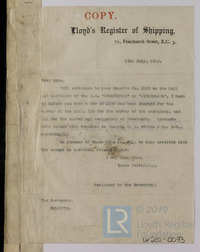- Related documents Related
- Full details Details
- Report document? Report?
Use the data export button to extract customised data sets from the Ship Plan and Survey Report Collection. Available in TSV and CSV formats.
Date recorded as the time of writing.
16/06/1922
The year in which a vessel’s construction is completed.
1912
The port or place in which the vessel’s construction took place, at the time of writing.
Vegesack
Records that constitute Lloyd’s Register’s first official encounters with a specific vessel, e.g. a survey report.
N
Location where the document is written.
Falmouth
Predominant material(s) utilised in a vessel’s construction.
Steel
Confirmation as to whether the vessel was equipped with refrigeration machinery to aid in the transport of frozen or chilled cargo/goods.
No
Does the vessel possess an auxiliary power source?
No
Is electric lighting fitted to the vessel?
No
Contextual information related to the reasons of the vessel’s loss or disposal.
Caught Fire & Abandoned; Presumed Sunk
Recorded date for the vessel’s loss or disposal.
24/09/1941
Name of ship as recorded on the record
Nigaristan
The individual and/or organisation listed as having been responsible for constructing the vessel. This can/may be the same as the owner and/or manager.
Bremer Vulkan
Official administrative title (often printed) of a record used by Lloyd’s Register or external organisations.
14 Report on Masts, Spars, & Rigging
Name of the individual/entity/organisation responsible for authoring the record
Mark Daboon
A vessel’s means of propulsion.
Steam
Is the steamer assisted by sail?
No
Is machinery fitted at the aft of the vessel?
No
Generally a smaller additional auxiliary boiler (often used while the vessel is at port).
No
Name of the Proving House responsible for the public testing and certification of a vessel’s anchors and/or chain cables.
No
Vessel’s place of loss or disposal/last known recorded location.
Reykjavik
Physical extent of a record.
1
Report an issue with this document
Have you noticed missing or incorrect data or images for this document?
Please let us know and we will rectify the issue as soon as possible.

